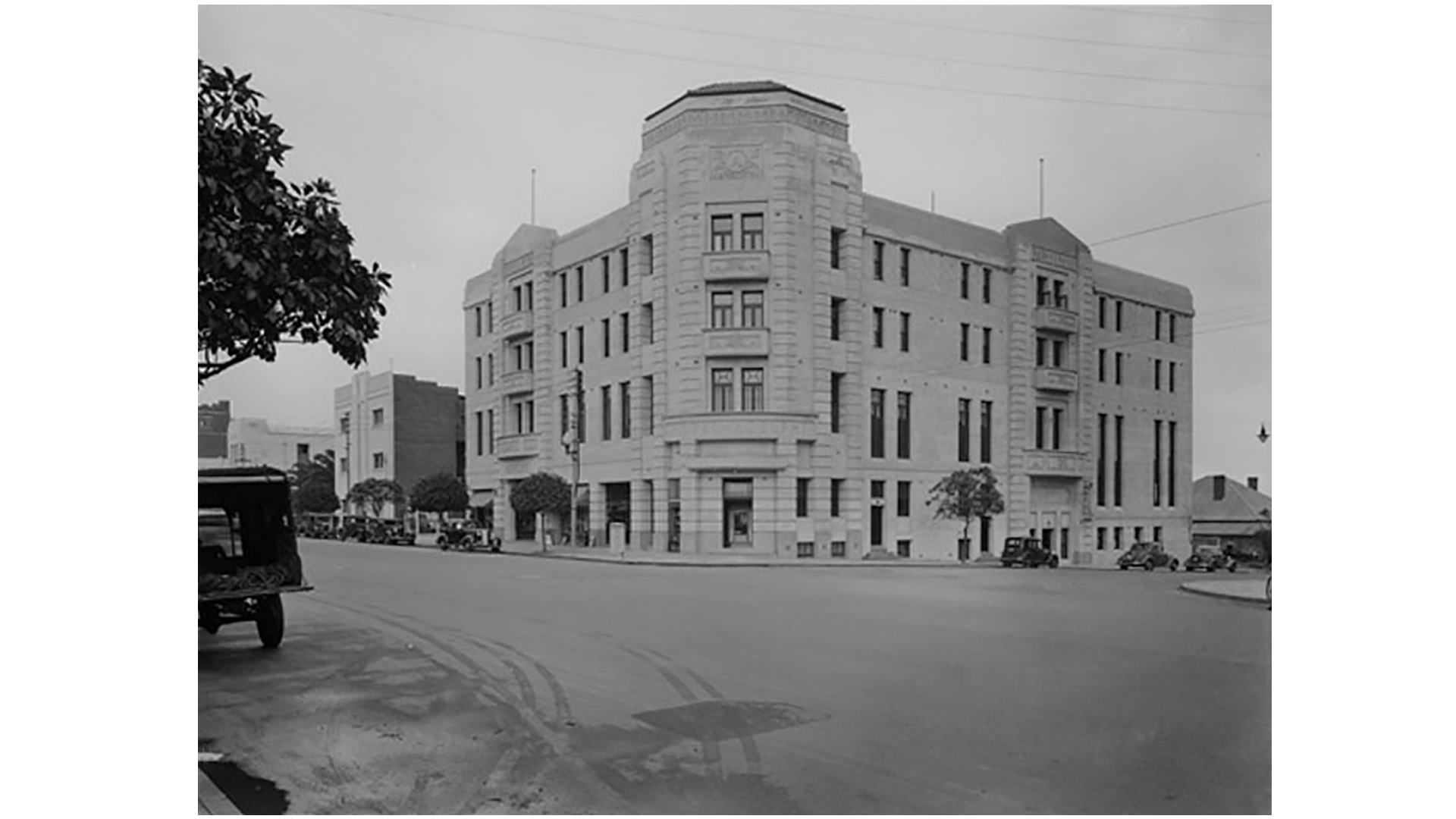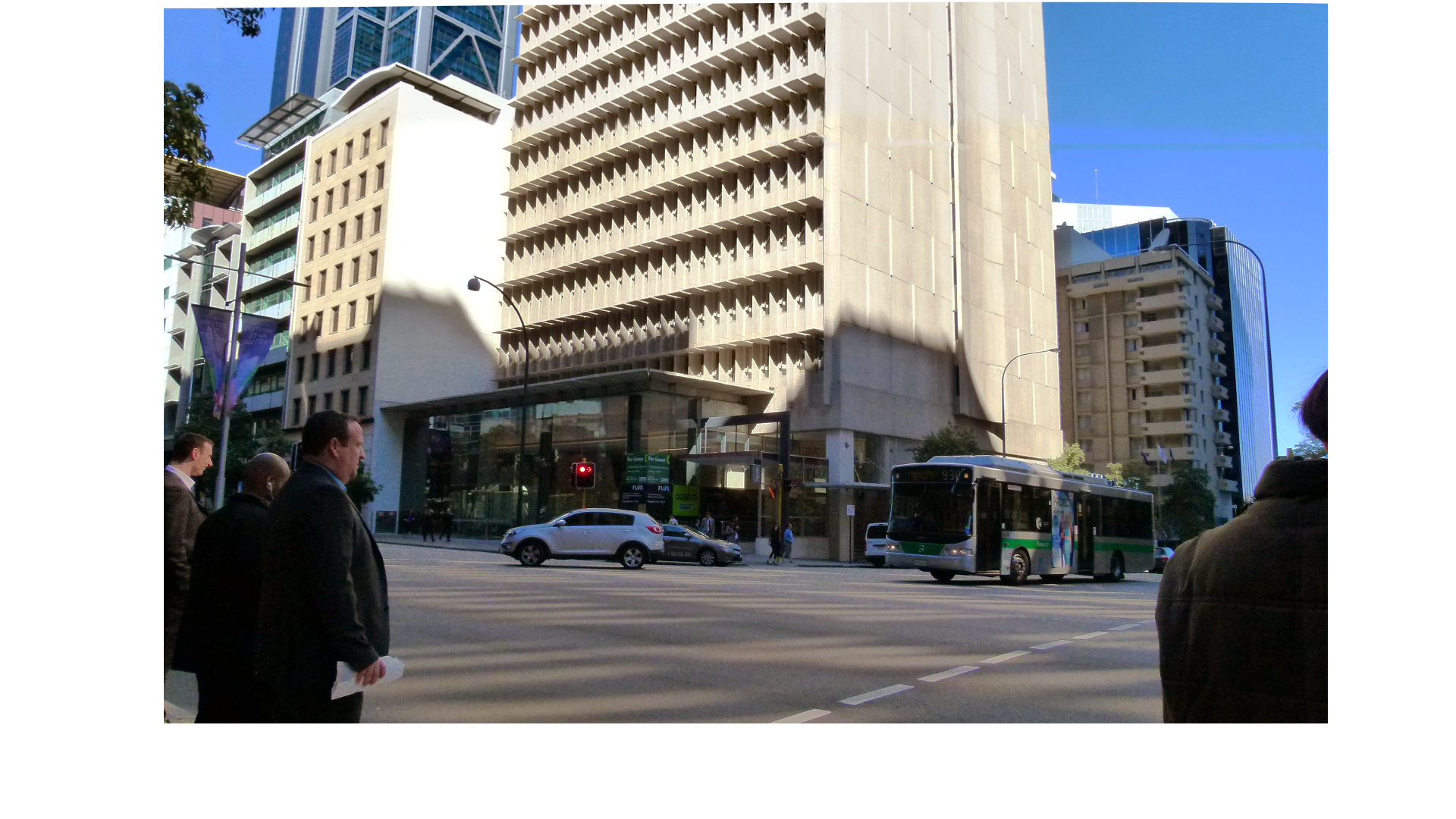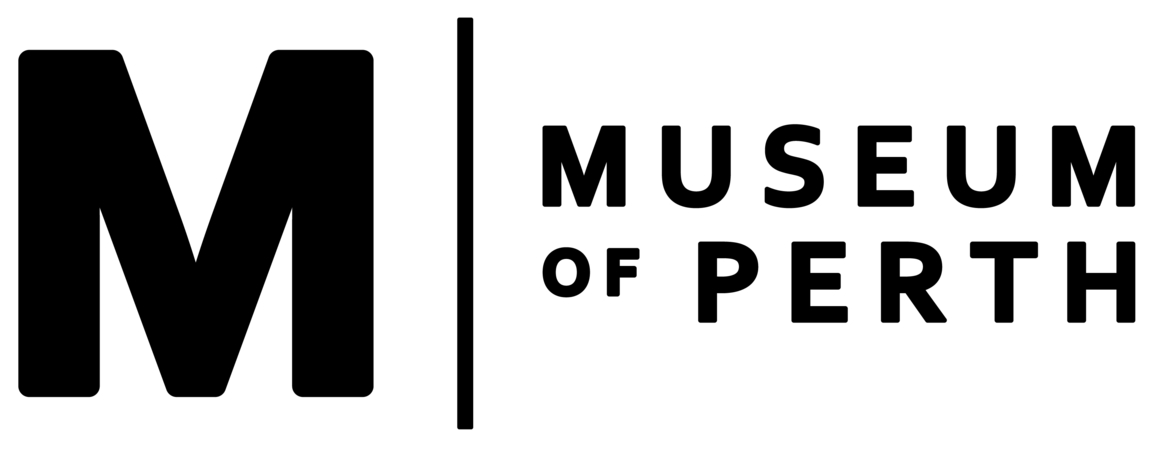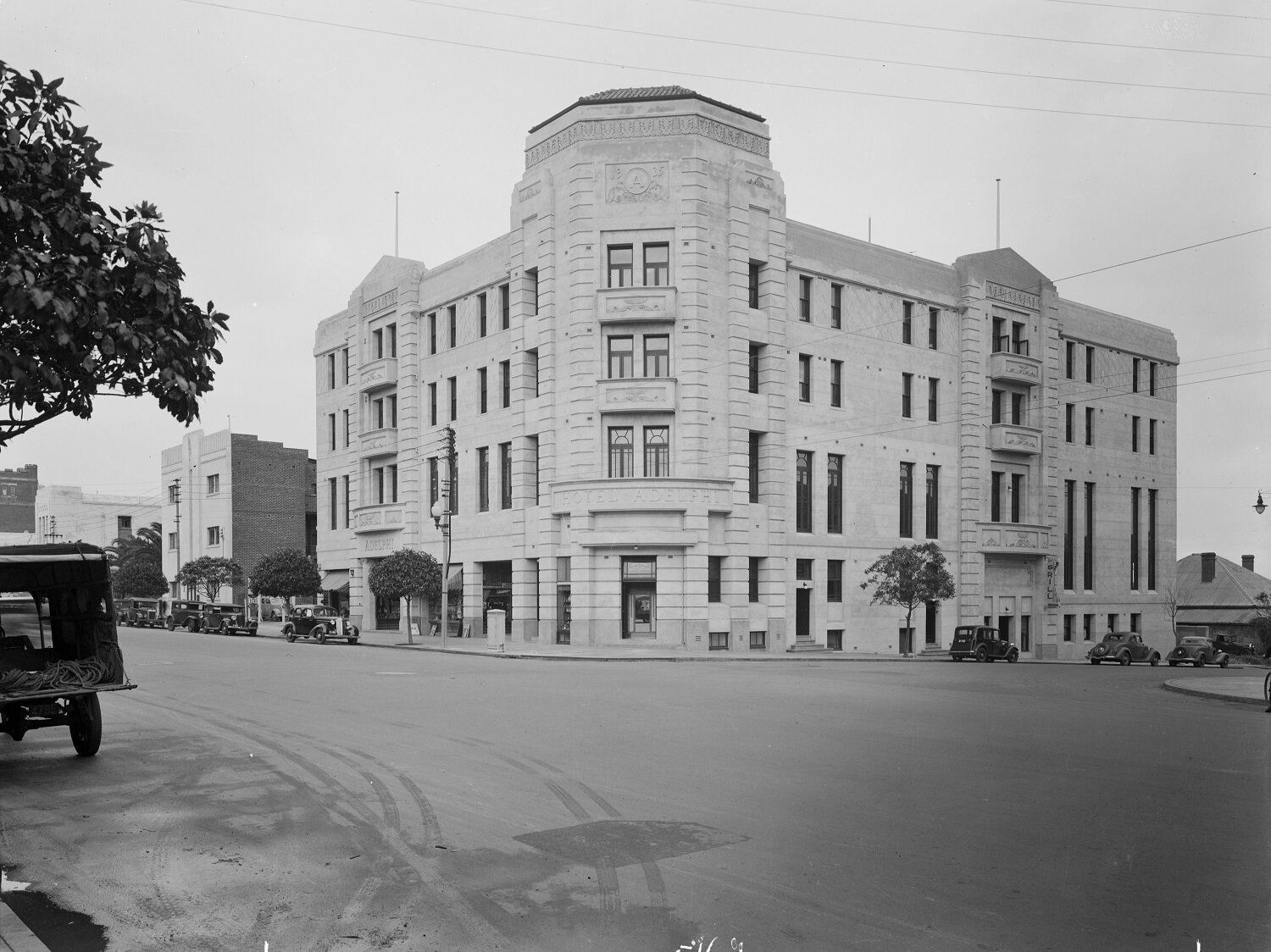HOTEL ADELPHI (1935-1967)
In 1933 Australian department store chain Foy and Gibson placed property adjacent to their factory on the market, including an almost three acre block on the Mill Street corner of St George’s Terrace (now 191 St George’s Terrace).
Two old homes stood on the block; a private residence and a simple 1850s dwelling once so picturesque it was known as ‘Honeymoon Cottage’, now a Chinese laundry. Initially considered as a potential site for a new town hall, it was bought by successful gold miner and Perth hotelier Gordon Dunleavy.
Notable Perth architects Oldham Boas & Ednie-Brown won the tender to design a hotel for Dunleavy on the site, and Finlay and Stoneham were awarded the building contract on a cost of £58,000.
Construction commenced in 1935 using 800,000 bricks and 554,400 feet of timber flooring. Everything was on a grand, luxurious scale. Basement plans show a beauty parlour, men’s hair salon, a swimming pool (intricately tiled, it was Perth’s first hotel pool) and a Turkish bath and gymnasium, while a tea pagoda in the roof garden allowed guests to view the city skyline.
In September 1935, 22-year-old soccer player Thomas Begg was working on this section. Straddling empty space on scaffolding in the penthouse stairwell, he slipped and fell to the basement, 80 feet below. His head struck a concrete beam on the way down and he died from severe injuries on the way to hospital. It was the only adverse incident during construction.
Margaret Pitt Morison, Western Australia’s first female architect then working with Oldham Boas Ednie-Brown, designed the interior. Modern bathrooms in stunning white, with chrome tiles were the perfect counterfoil to 12,000 square feet of walls, hallways and dadoes cleverly painted with marbled finishes appropriate for an old Florentine palace. The downstairs entrance hall and public areas had plush Axminster carpet laid throughout; 2.5 acres fitted in all. The entire hotel, including the 54 bedrooms, was then furnished throughout by Boans, with Australian Sheoak bedroom suites and Jarrah and glass-fronted cocktail cabinets in the lounges. The Lobby Lounge was upholstered in Australian leather, the Men’s Lounge finished with Dutch tapestry and the Women’s Lounge in rich green velvet.
Fifteen months after construction began, the Hotel Adelphi was opened on Thursday 16 January 1936. The hotel’s restaurant ‘Adelphi Grill Room’, luxuriously appointed with high quality furnishings, opened at the Mill Street entrance a few months later. Already considered one of the best in Australia the Hotel Adelphi was well-patronised by Perth’s high society and the place to be seen before and after shows at His Majesty's Theatre, nearby on Hay Street. Within a few months the hotel even harked back to the property’s earlier history and became hugely popular with honeymooning couples as well.
Gordon Dunleavy initially managed the Hotel Adelphi but leased it to goldfields publican Kevin O’Keefe in June 1937, who bought it from Dunleavy in 1951 for an undisclosed sum.
Destruction
In 1967 the Hotel Adelphi was demolished and replaced by Parmelia House, a 19-storey office building. The adjacent Parmelia Hilton Hotel was the first of the modern five-star hotels built in Perth. In recognition of the previous hotel, Hilton's signature restaurant is named the 'Adelphi Grill'.
By Shannon Lovelady
Story from Demolished Icons of Perth





















